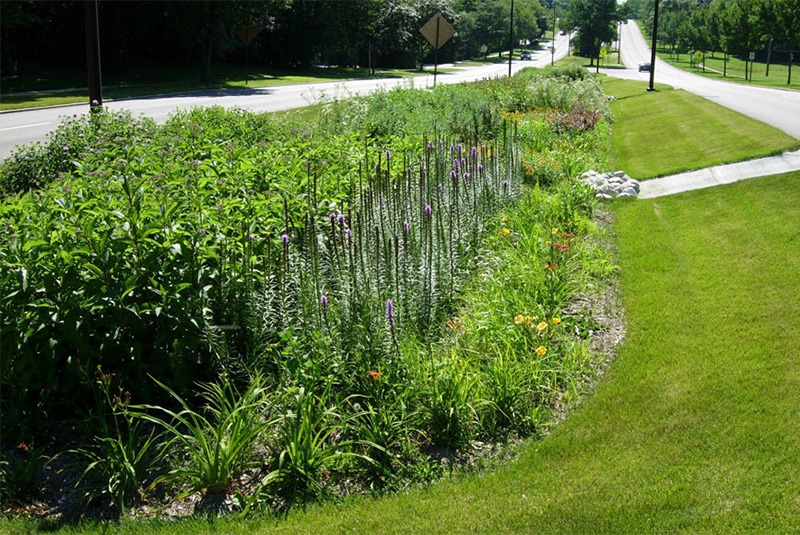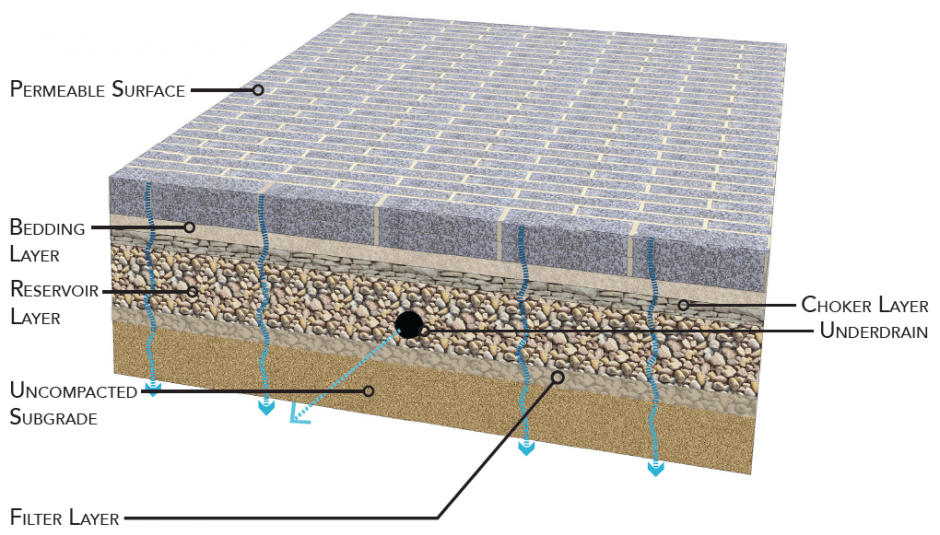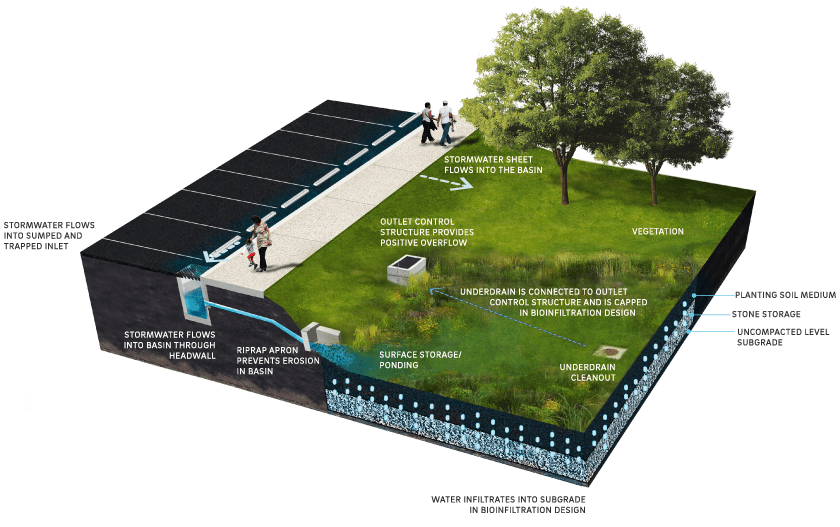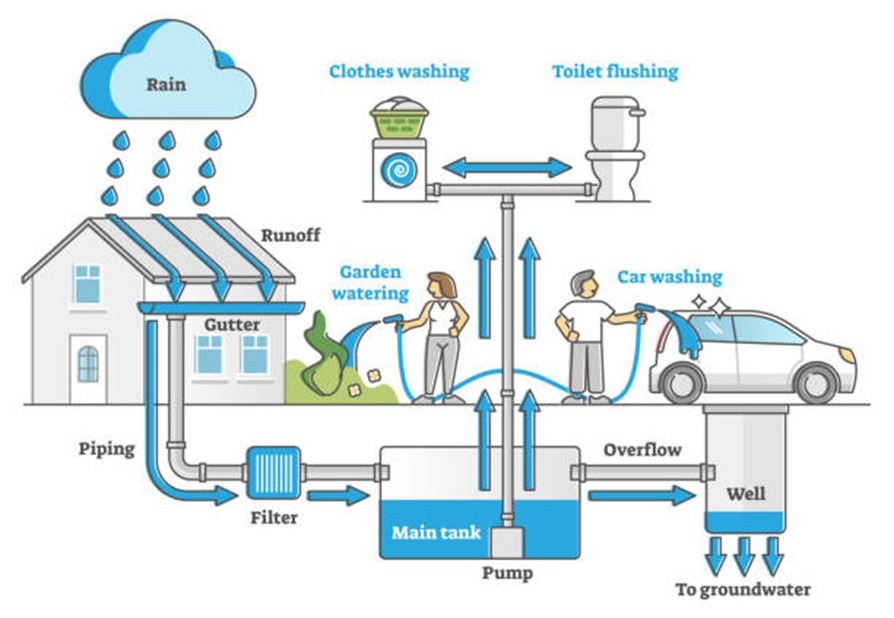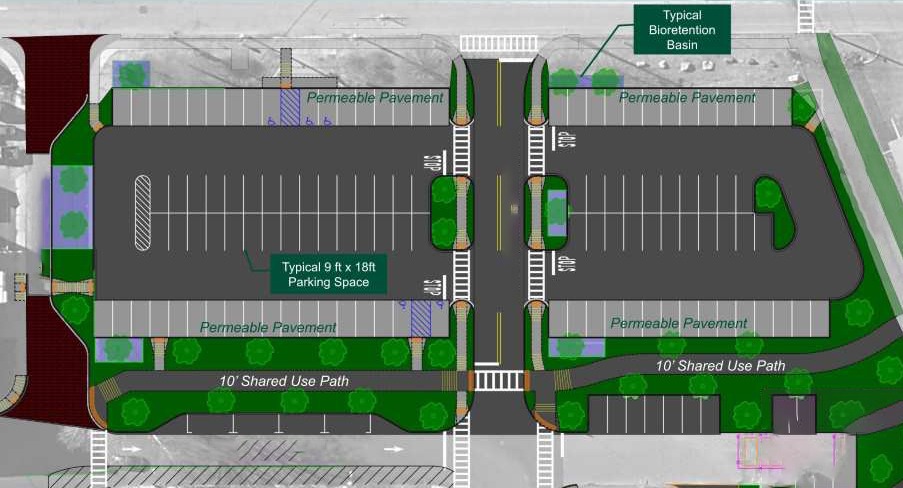In Part I of our blog series on Greening Stormwater and Wastewater Infrastructure, the Spring 2022 Center for Law and Policy Solutions interns looked at the twin challenges of aging water infrastructure and climate change in the United States. In that blog, they outlined how those challenges result in flooding and overflows of combined sewer systems into local waterways. In this blog, Part II, they introduce green infrastructure and detail the different types of green infrastructure that can help municipalities address those challenges and impacts. Stay tuned—they’ll be following up in Part III with local examples of green infrastructure projects implemented in Albany, New York, and Toledo, Ohio.
Gray to Green Infrastructure
Gray infrastructure is the traditional approach to stormwater and wastewater management that involves impervious surfaces to redirect water flow away from the built environment. These impervious surfaces, as defined by the Environmental Protection Agency (EPA), include “rooftops, parking lots, streets, sidewalks, driveways, and surfaces that are impermeable to infiltration of rainfall into underlying soils/groundwater.”
As discussed in our previous blog, much of America’s gray infrastructure with respect to stormwater and wastewater is nearing or at the end of its lifespan and is in need of costly maintenance or replacement. Once more, that infrastructure is stressed by increasingly frequent and intense wet weather events as a consequence of climate change. While repairs and replacements to gray infrastructure systems are needed, implementing complementary green infrastructure alongside them can be a more cost-efficient option for designing municipal systems that also improves the overall environmental health of communities.
Defining Green Infrastructure
Broadly speaking, green infrastructure is an approach and set of practices for water management—primarily stormwater management—that “are designed to mimic the natural ways water flows over and absorbs into land to reduce stormwater pollution.” It includes permeable pavements that allow rainwater and melting snow to pass through and be absorbed into the ground below, as well as rain gardens and bioswales that use certain plants and soil mixtures to capture, treat, and filter stormwater runoff.
In general, these practices help absorb and redirect excess precipitation that might otherwise overwhelm stormwater and wastewater systems, resulting in flooding and the runoff or overflow of pollution into local bodies of water. More technically speaking, the federal Water Infrastructure Improvement Act of 2019 defines green infrastructure as “the range of measures that use plant or soil systems, permeable pavement or other permeable surfaces or substrates, stormwater harvest and reuse, or landscaping to store, infiltrate, or evapotranspirate stormwater and reduce flows to sewer systems or to surface waters.”
Examples of Green Infrastructure
Permeable Pavement
SOURCE: District of Washington Department of Transportation.
Permeable pavements are designed to allow rainwater and snow to pass through them, rather than to cause runoff and flooding. The permeable or porous surface allows for rain and melting snow to seep down to the layers of soil and gravel underneath, helping to filter out water pollutants. This method can be cost-effective in areas with flooding concerns, and has already been supported and implemented by several states, reducing the need for conventional draining.
Bio-retention
SOURCE: Lyngso.
Bio-retention areas are depressed areas that allow shallow ponding of stormwater runoff. Also known as rain gardens, bio-retention uses vegetation and layers of soil to filter containments and sedimentation in stormwater runoff. These areas are aesthetically pleasing and can be incorporated in diverse ways. An example of a small-scale bio-retention infrastructure are tree trenches, which are popular in urban areas.
Bio-recreation
SOURCE: Philadelphia Water Department.
Bio-recreation is a bio-retention field that can be used for recreation in drier conditions. A bio-recreation field uses the same methods as bio-retention. These fields improve community livability in the area by providing a cost-effective stormwater filtration, and when the field is not acting as a filter for stormwater, dry conditions allow it to act as a recreational field or park.
Bioswales
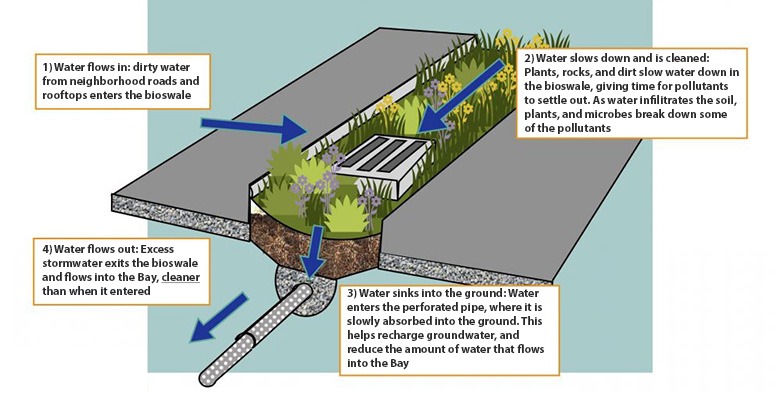
SOURCE: The Watershed Project.
Bioswales use plants and soil mixtures to filter and treat stormwater. Using vegetation and depressions, the sloped sides provide an alternative to storm sewers, designed to filter stormwater as it moves downstream. Native vegetation provides aesthetics and allows bioswales to be easier and more cost-effective to maintain than other storm sewers, as bioswales need less water and do not need fertilizer. In addition, bioswales populated with native vegetation can help resist local pests and diseases.
Rainwater Harvest
SOURCE: iStock Photo.
Rainwater harvesting includes a “variety of systems” according to the EPA that “range from the backyard rain barrel and the commercial building cistern to ground level pits, aquifers and even nets that capture dew and fog.” A rainwater harvesting system reduces excess stormwater by collecting rainfall for other uses—typically harvesting the runoff from a roof. Gutters or drains collect the runoff into a storage tank. This collected rainwater can be put to other uses such as washing clothes or gardening, reducing the need for water from the tap. Homes and buildings with rainwater harvesting systems help prevent urban flooding and conserve treated water for appropriate uses.
Green Parking
SOURCE: EngageKingston.
Green parking refers to parking lots that integrate practices such as permeable pavement and bioswales into their design. Parking spaces and lots represent a significant portion of our impermeable landscapes—thousands of square acres across the United States. Accordingly, the United States Geological Survey notes that “they may be a significant source of pollution” as contaminants like oil and heavy metals on their surface are carried into local waterways via runoff from precipitation. Green parking lots work to reduce urban flooding, filter stormwater, and mitigating heat.
Green Roofs
SOURCE: National Park Service, US Department of the Interior.
Green roofs incorporate a layer of vegetation on their surface that can absorb and filter excess precipitation. Green roofs also provide thermal regulation, cooling a building during warm weather and insulating it in cold weather. A great form of green infrastructure for urban areas, green roofs help decrease water runoff and improve water quality, mitigate heat island effects, and increase the energy efficiency of buildings.
Green Streets
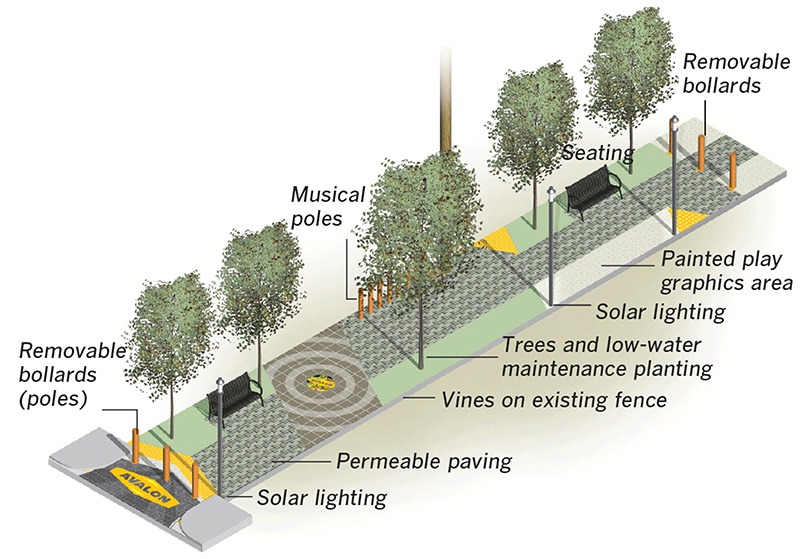
SOURCE: SALT Landscape Architects.
Green streets and alleys integrate green infrastructure into their design in order to help mitigate the impacts of excess stormwater. While each municipality may define green streets a bit differently, in general they can include features such as: permeable pavement, bioswales, planter boxes, and trees. In addition to providing a method to store and filter stormwater, green streets and alleys improve walkability in a community. Green streets may also incorporate benches, lighting, and limited vehicular access.
As seen here, there are a wide range of green infrastructure practices and urban design elements that can supplement existing gray infrastructure to improve water management and quality in a community. Many of these practices can be implemented by municipalities or by residents at various scales to helps absorb and divert excess precipitation, filter stormwater, and prevent or mitigate combined sewer overflow events that contaminate local waters. These practices can meaningfully complement the necessary repairs and replacements to water infrastructure discussed in our previous blog. In our next blog, we will show how two cities Toledo, OH and Albany, NY have done just that, implementing many of these practices to improve the water and quality of life in their neighborhoods.
ABOUT THE AUTHOR(S)
The authors were Center for Law & Policy Solutions (CLPS) research interns for the spring 2022 semester.

